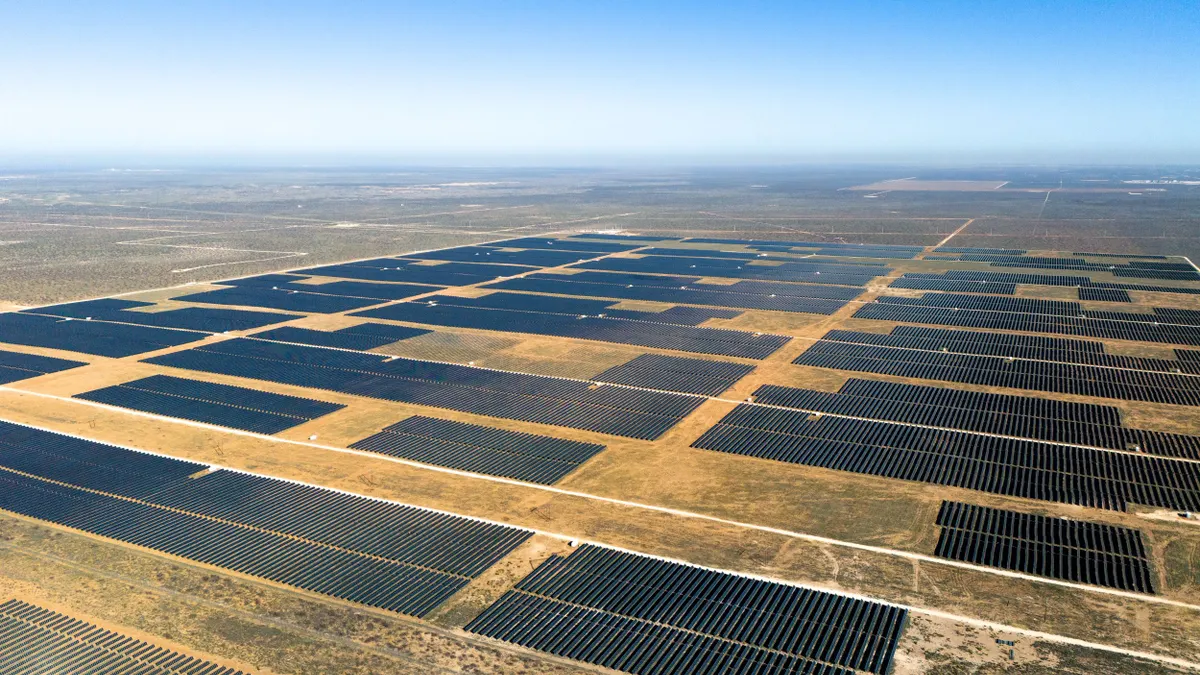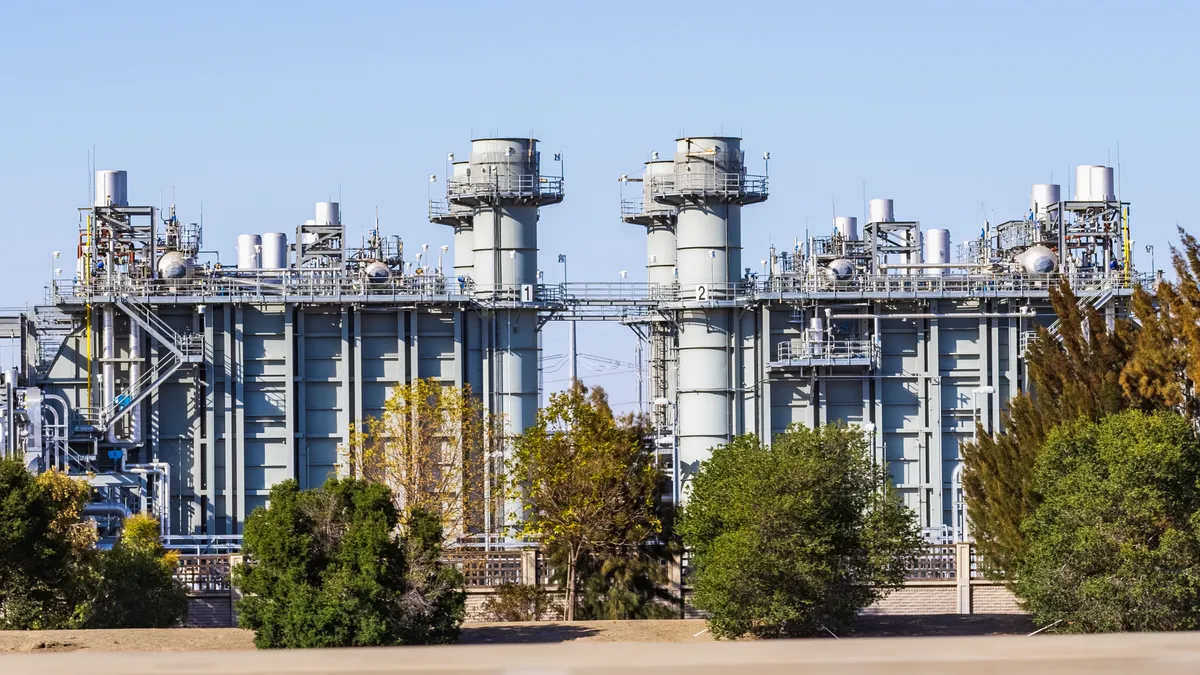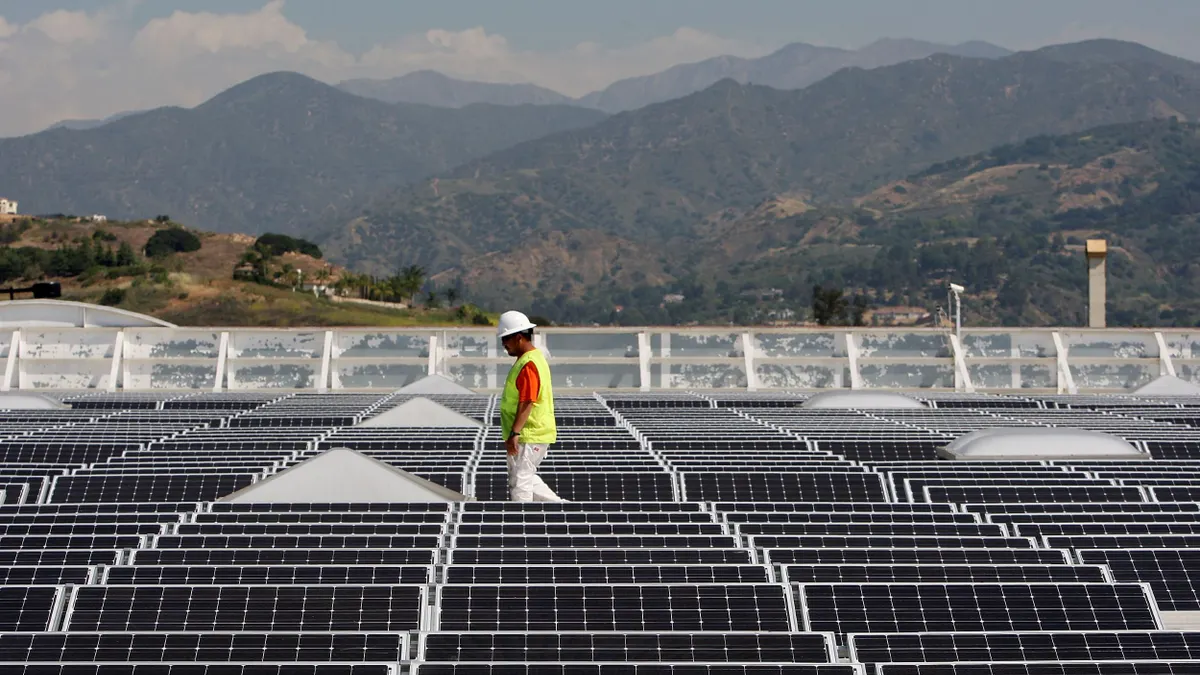Utilities are pushing for a bigger role in integrating distributed energy resources (DER) in their service territories, saying their ownership would benefit customers. They also see economic opportunity and other advantages in the flexibility of DER, which is becoming vital in today's power sector transition.
"Utilities are now critical in decarbonization and, as power grid experts, they are leading innovation," said Duke Energy Vice President of Rate Design and Strategic Solutions Lon Huber. "All clean energy options should be on the table, and if a program is structured in a way that provides benefits to all customers — participants and non-participants — it is a win-win that should be pursued."
Meanwhile, a new study from the Department of Energy's Lawrence Berkeley National Laboratory finds benefits of utility DER ownership, though private sector advocates say the data may not tell the whole story.
Utilities competing against private providers exposes shareholders to unnecessary risk, former Federal Energy Regulatory Commission Chair Jon Wellinghoff said, reaffirming his 2015 position, which was cited in the LBNL study. Utilities should instead "host" the "grid marketplace" and "allow third parties to bear the risk of selling DER to end customers," Wellinghoff wrote in a 2015 op-ed.
Though many regulators have accepted utilities' move from traditional, centralized generation to utility-scale renewables, until recently states such as Mississippi and Florida have seen utility DER ownership as intruding in the private market.
But a debate in Florida over whether utilities should be allowed to own community solar may foreshadow a shift in power sector dynamics.
Rooftop solar could increase utility shareholder earnings
Utility-owned rooftop solar programs could increase total shareholder earnings by 2% to 5% over 20 years, LBNL modeling found, compared to an estimated 2% loss over 20 years from the same amount of customer-owned or leased rooftop solar.
Shareholder benefits come largely from ratepayer-paid returns for utility capital expenditures on solar and from limiting compensation to private, net-metered solar owners, LBNL found.
Under LBNL's scenario, rates increase due to additional utility spending, but only by 2%, comparable to the 2.2% bill increase non-rooftop solar customers would see because of net metering compensation and other costs, LBNL Research Scientist and study co-author Galen Barbose said.
"Shareholders win and customers break even in our base case assumptions," Barbose said.
Less certain assumptions could further improve the value proposition for utilities, he added. Better visibility and control of solar, lower interconnection costs, and potentially deferring system upgrade costs, could all make it "a win for utilities and a marginal win for customers."
The role of regulated utilities in private markets "raises thorny policy questions for regulators and stakeholders," Barbose acknowledged. But this study addresses "a simple and perhaps threshold question of the basic economics for utilities owning rooftop solar."
As the market moves beyond early adopters, there is some logic in utilities owning DER when the value proposition is potentially neutral for customers and better for shareholders, Rábago Energy Principal Karl Rábago, a former Assistant Secretary of Energy and Texas utilities commissioner acknowledged.
But utility ownership is only "the second-best solution," Rábago said. Shareholder and non-participating customers benefits are small and should not justify allowing DER ownership by "institutions which typically innovate more slowly and at higher costs than the competitive market."
Solar installers oppose utility interference
Not surprisingly, solar installers agree with Rábago. The private market is "the best way to achieve cost reduction and innovation," Sunrun Chief Policy Officer Anne Hoskins said. Utilities' best role is in "enabling network access."
Sunrun is working on virtual power plants and non-wires alternatives in which utilities will "play a central role" but will not own the resources, said Hoskins, a former Maryland utility regulator and utility executive.
Utilities do fill one key role in distributed solar ownership, Rábago, Hoskins and Huber agreed — addressing underserved or hard to serve markets.
That "is the reason utilities were given monopoly franchises," Rábago said. "LBNL's paper shows there is not a legitimate shareholder argument against utilities owning solar in those markets."
The value proposition for utility-owned rooftop solar is especially strong for low income customers who lack the resources to invest in solar for themselves, and do not have access to community solar, Huber said.
Nevertheless, the private market has usually won regulatory protection because it is growing rooftop solar impressively, Hoskins said.
"The distributed solar market is expanding and utilities don't want to lose that market share."

Karl Rábago
Principal, Rábago Energy
Utility-led rooftop solar programs have been approved in Arizona and Texas, and utility-led rooftop solar pilot proposals are pending before regulators in Arkansas and Mississippi. But many utilities are seeing greater benefit in community solar, leading to a shift in focus that raises the same ownership questions, said North Carolina Clean Energy Technology Center Senior Manager of Policy Research Autumn Proudlove.
This suggests the marginal benefits of rooftop solar ownership identified by LBNL may not be the whole story.
Arizona Public Service (APS) is methodically testing new use cases for its groundbreaking utility-owned rooftop solar programs, but concluded it has limited peak load reduction value, spokesperson Jill Hanks said in an email. APS, along with San Antonio's CPS Energy and Tucson Electric Power, all leaders in piloting utility-led rooftop solar pilots, are all now focused on community solar.
These proposals raise the question of what the appropriate boundary is between regulated and competitive markets. Florida regulators may soon need to define that boundary.
Florida's community solar debate
Duke Energy Florida proposed a 749 MW Clean Energy Connection program in July that would give customers bill credits for community solar participation. Up to 65% of capacity will go to large business customers, 10% to local governments, 25% to residential customers and small businesses, and 28% to low income customers.
Some stakeholders, including solar advocates Southern Alliance for Clean Energy (SACE) and Vote Solar, agreed utility ownership was "in the public interest" after coming to an agreement with Duke on adding the carve-out for local government and low income customers.
The yet-to-be approved program is already fully subscribed, Duke's Huber said.
But other stakeholders fear the program will result in unfair rates. The program's design includes "numerous fatal flaws" and is "not in the public interest" because it would impose a "rate burden" of "several hundreds of millions of dollars" on the utility's non-participating customers, Rábago wrote in October comments. The program only benefits participating customers, making it "a subsidy program for the very few, and a travesty of the concept of community shared solar."
Duke contradicts this assertion, saying 12.7% of the projected $465.1 million in net benefits will go to program participants while 87.3% will go "to the general body of customers," in its filed comments.
Some solar advocates are "still stuck in the outdated 'If it is from the utility, it is bad' narrative."

Lon Huber
Vice President of Rate Design and Strategic Solutions, Duke Energy
But Rábago questioned the assumptions in these numbers about "value derived from avoided costs" for infrastructure building and maintenance by deploying community solar. Those assumptions are uncertain, "increasing the risk to non-participants," he wrote.
The proposal provides benefits that induce customers "not to pursue free market options" like rooftop solar and "reduces or eliminates the opportunity for competitive developers," Rábago added.
The program is structured to provide net benefits to all Duke Energy Florida customers and avoid any "long-term cost shift to non-participating customers," Huber responded. That is "because the cost of the solar is so low for larger installations."
Their disagreement reverses a long-standing debate about the value of solar.
Solar advocates have long argued that the true value of distributed solar includes the infrastructure costs utilities avoid when customers install it. Rábago said those costs are uncertain. Regulated utilities have long denied there are significant avoided costs from distributed solar.
But community solar does avoid infrastructure costs, Huber said. Duke's calculations are based on assumptions used by solar advocates, including Rábago, in value of solar proceedings across the country that typically include avoided costs as part of the value, Huber said.
Florida regulators may choose to protect the private market by ruling against Duke ownership of community solar. But they also may affirm a new "convergence" between utilities and the private sector in which a new generation of utility leaders may now be able to pursue utility ownership of DER more aggressively.
A potential convergence between regulated and free markets
The potential convergence is clear in Duke's agreement with stakeholders. In addition to its provisions for local governments and low-income customers, Duke commits to protecting retail rate compensation for rooftop solar owners' exported electricity through 2023, making the utility's solar "complementary to rooftop solar," SACE Solar Program Director Bryan Jacob said.
Duke will also consider using solar and solar-plus-storage systems to defer or replace investments in new natural gas generation. And its competitive solicitation for developers gives the private sector a role in the program, Vote Solar Southeast Director Katie Chiles Ottenweller added.
While Rábago sees utilities as a "second best" option for DER development, he also sees why parties are converging toward it.
"The distributed solar market is expanding and utilities don't want to lose that market share," Rábago said of the compromises in the agreement. "The LBNL paper adds the argument that there is shareholder value in distributed solar."
Duke's proposal demonstrates how once clearly partitioned markets "are now overlapping, intersecting and interacting through a series of convergences," he said. For example, "the cost of solar is now so low that even the relatively economically inefficient, traditional electric utility can make money for shareholders in this business."
There is "a generational convergence in which utility management is, like much of the public, evolving."

Karl Rábago
Principal, Rábago Energy
Hints of these debates over utility DER ownership have been seen in Arkansas and Mississippi, and in the Colorado debate over Xcel Energy's ownership of community solar.
Solar has also converged with "things the utility has the regulatory and economic leverage to do something about," he added. "It can't do anything about things like natural gas prices, but it can attempt to control the solar market segment."
Utilities' ability to bring DER ownership proposals to regulators, and the low costs of distributed solar, are converging with utilities' growing need for distribution system modernization, Rábago said. They can now argue their massive capital investments in DER and system infrastructure are for reliability and resilience, but that spending will also accelerate returns and increase shareholder earnings, he added.
Finally, there is "a generational convergence in which utility management is, like much of the public, evolving," he said. As the generation of leadership that resisted DER growth retires, "new managers are emerging who do not see risks but opportunity" in distributed technologies.
"The LBNL paper is a postcard from the convergence that says owning assets on the distribution system is an opportunity," Rábago said. "Regulators may let utilities do this because it suits their jurisdictions, but that will erode the principle of the free market."
"We need to dramatically scale up dependable and cost-effective clean energy solutions to meet aggressive climate goals," Duke's Huber responded. Some solar advocates are "still stuck in the outdated 'If it is from the utility, it is bad' narrative," but Duke's innovative rooftop solar policy in the Carolinas and its intention to link storage with the proposed community solar program in Florida "show it is driving innovation," he said.
Regulators and policymakers should now recognize that "this kind of fundamental decision about regulated and competitive markets is before them, or will soon be," Rábago said. "Their answer will test their belief in free market principles against their confidence in regulated monopolies' ability to deliver value in this rapidly evolving market."






















